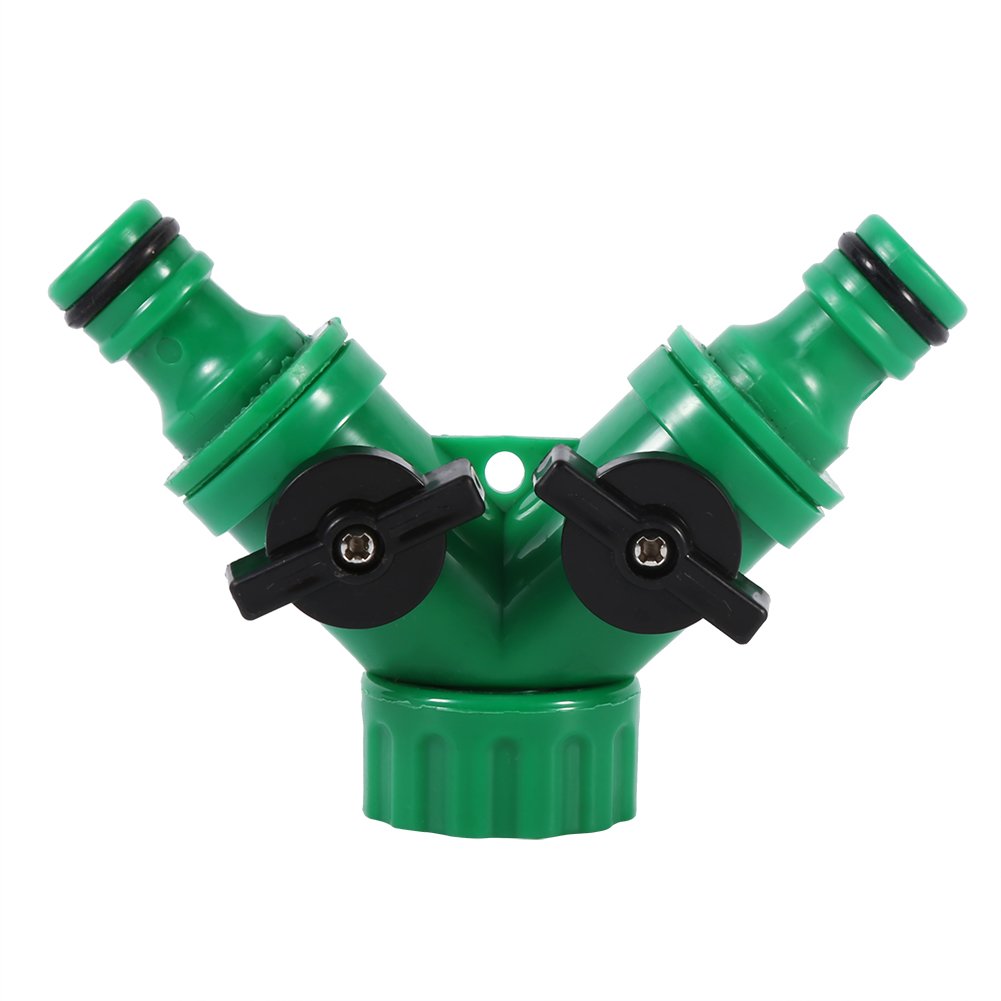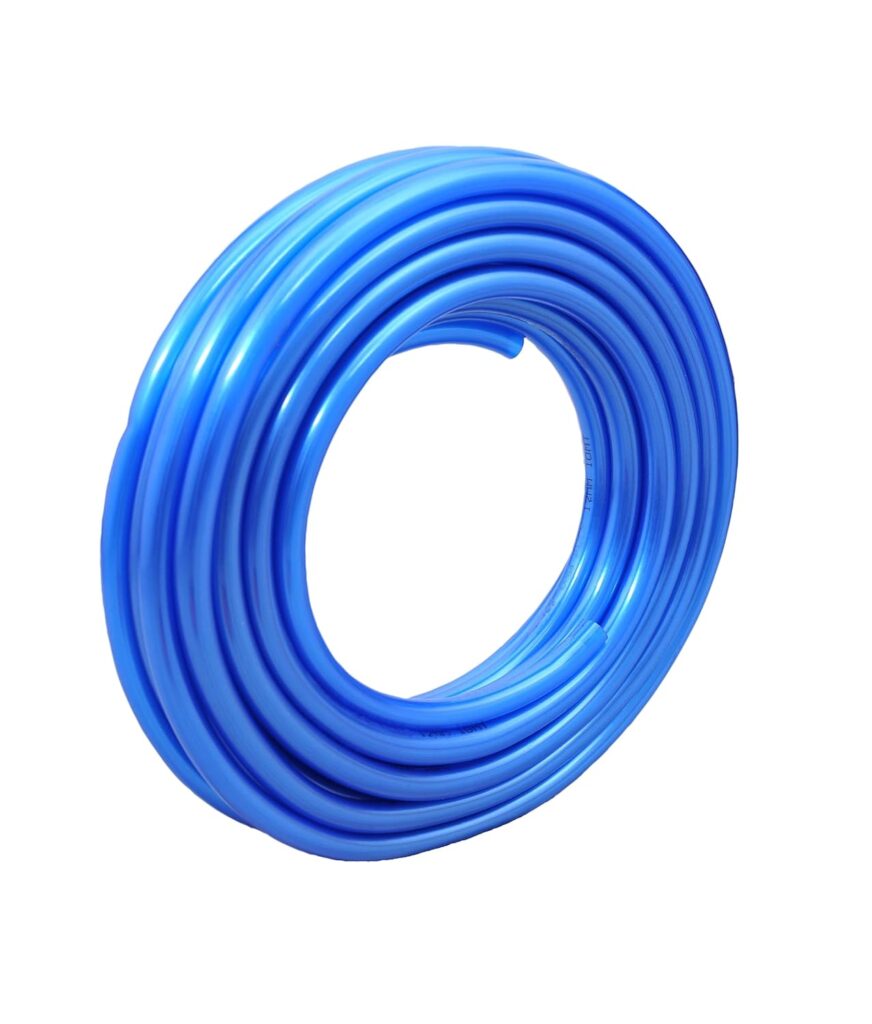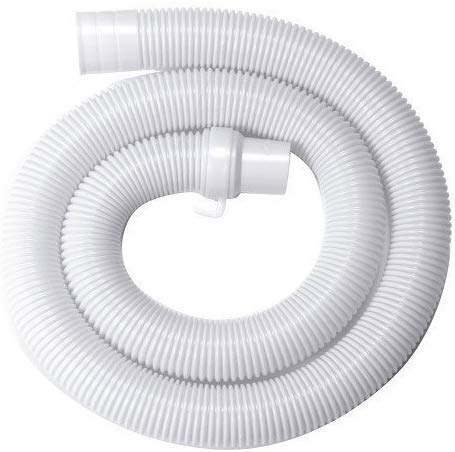Pipes for water inlets, which are often overlooked yet vital, provide vital lifelines for the washing machine. They quietly supply water to your appliance, making sure it can fulfill its primary task. Without these sturdy washing machine water pipes, the laundry routine could be slowed to a halt. As with any essential component, these petty pipes are prone to their share of problems and sometimes disrupt the cycle of your laundry. This article will look at the importance of the water intake pipes, their crucial function in the washing machine’s performance, and the most common problems that users often face. So, let’s get into the complexities of these obscure but vital parts. We’ll take you on a journey of the washing machine water inlet pipe and help you make an informed choice.
Here are the top 10 Best Types of Washing Machine Water Inlet Pipe
Washing machines have become essential appliances in our modern homes, which has helped streamline the process of washing laundry while making lives more efficient. In the background, one of the most important components, which is usually overlooked, is the washing machine’s water intake pipe. They play an essential function in providing water during every cycle. Understanding the various kinds of washing machine water intake pipes and their pros and cons can help you pick the best one for your particular appliance. We’ll look into the five most effective kinds of washing machine water intake pipes and also discuss the most important factors when choosing the right one.
1. Rubber Water Inlet Pipes

Pros:
- Cheap and easily accessible.
- It is easy and flexible to install.
- Resistant to corrosion and rust.
Cons:
- It is less durable than other materials and more susceptible to tear and wear.
- At risk of being damaged by UV rays as well as extreme temperatures.
Considerations:
- It is ideal for those with tight budgets.
- Regular inspection and maintenance could be required for long-term longevity.
2. Braided Stainless Steel Water Inlet Pipes

Pros:
- Very robust and durable.
- It is resistant to cracking, kinking, and breaking.
- Ideal for high-pressure water supply.
Cons:
- It is slightly higher in cost than PVC or PVC alternatives.
- May require special connectors for installation.
Considerations:
- Ideal for areas that have high levels of hard or variable pressure.
- A wise investment that lasts a long time will reduce the need to replace parts
3. PVC Water Inlet Pipes

Pros:
- Easy to install and affordable.
- The weight is light, and it’s resistant to chemicals.
- It can withstand a range of temperatures.
Cons:
- At risk of kinking or damage when not properly supported.
- It is possible that the quality will degrade because of UV exposure.
Considerations:
- A budget-friendly option is perfect for moderate-pressure water.
- Protection from the sun’s rays is crucial to long-term health.
4. Copper Water Inlet Pipes

Pros:
- Highly durable and corrosion-resistant.
- Excellent resistance to cold and heat.
- Perfect for areas that have hard water.
Cons:
- More expensive than other alternatives.
- Some may require soldering expertise to install.
Considerations:
- The best choice for long-term durability and dependability.
- A professional installation is sometimes required to ensure a leak-free connection.
5. PEX (Cross-linked Polyethylene) Water Inlet Pipes

Pros:
- Highly flexible and resistant extremely flexible and resistant to.
- It is corrosion-resistant and can be used at an array of temperatures in the water.
- Installation is simple with push-to-connect fittings.
Cons:
- A moderate cost when compared with rubber or PVC alternatives.
- Might not be as strong as copper or stainless steel.
Considerations:
- A flexible option and DIY-friendly.
- Ideal for the majority of households, it is a good compromise between price and performance
6. Standard 3/4-inch Inlet Pipes

Pros:
- The most common and widely available inlet pipes of standard 3/4 inches are the most popular size, which makes them easily accessible from hardware retailers.
- Sturdy and durable The majority of them are made of durable materials like stainless steel braids that can endure damage and wear.
Cons:
- Some faucets may not be compatible with others Certain older faucets or non-standard fittings may not work with this dimension.
- The limited flexibility and stiffness of these pipes could hinder your ability to adjust the machine’s location.
7.1/2-inch Inlet Pipes

Pros:
- Inlet pipes of 1/2-inch diameter are usually ideal for older washing machines as well as faucets that have smaller connections.
- Flexible: They’re more flexible and allow you to set up and alter your washing machine within a tight space.
Cons:
- Lower water flow: smaller pipes could supply lower amounts of water, thereby impacting the washing performance.
- Afraid of Kinking Thinking: Flexibility may cause the Kinking process, which can cause disruption to the flow of water and lead to leaks.
8. Custom-Sized Inlet Pipes

Pros:
- Tailored Fit: Custom-sized intake pipes can be designed to meet your requirements and ensure the perfect fit.
- Perfect for unusual installations When your washing machine’s configuration is unique or requires a unique size custom pipes are the best way to go.
Cons:
- More expensive: Custom-sized pipes typically cost more than the off-the-shelf alternatives.
- Extra Lead Time: This might take a while to get custom pipes designed and installed.
9. Dual-Size or Adjustable Inlet Pipes

Pros:
- Flexibility: These pipes provide the flexibility of fitting different sizes, which reduces the possibility of compatibility issues.
- Convenience: You can utilize them for a variety of faucets and washing machines without the need of separate pipes.
Cons:
- Potential for leaks The adjustable joints could be more vulnerable to leaks if they are not secured properly.
- Not recommended for high water Flows If you own an appliance that is large in capacity, the pipes might not provide the water flow you need.
10. A to Z Washing Machine Outlet Pipe Drain/Waste Water Flexible Hose Pipe

Pros:
- Installation is simple: The flexible design allows you to easily maneuver the pipe through narrow spaces and obstacles, making installation easier than with rigid pipes.
- Flexibility: It can be utilized with a variety of washing machine models and brands without the need to purchase specific adaptors. Furthermore, the length can be adjusted to allow you to adjust the length of the drain.
Cons:
- Prone to blockages and kinks The corrugated design could hold lint and other debris and lead to blockages over time. Regular cleaning is essential to ensure optimal performance.
- less resilient than rigid pipes: Plastic hoses are generally less durable than steel and reinforced pipes. They are more prone to tearing and punctures, especially when exposed to sharp objects or chemicals.
Installation and Maintenance of Washing Machine Water Inlet Pipes
When you think of washers, one tiny but vital part that is often left unnoticed is the water intake pipe. This little-known part of the plumbing plays a vital role in providing water to the machine. In this post, we’ll guide you through the steps to install it as well as provide helpful maintenance tips to stop leaks and issues and highlight the importance of regularly checking.
Step-by-Step Installation:
Installing a washing machine’s water pipe is an easy DIY project. Begin by shutting off your water source and disconnecting the old pipe, if there is one. After that, select a replacement pipe that meets your needs, for instance, an extremely durable stainless steel braided hose. Make sure you connect the water intake pipe to both the washer and the supply water, making sure it is an ideal fit. After that, switch your water back on and look for leaks. If everything is in order, it’s good to go.
Tips for Proper Maintenance:
Preventing leaks and maintaining the water intake pipe’s performance is crucial. Inspect the pipe regularly for wear and tear, like bulges, cracks, or indications of corrosion. Check that your connections are in good condition and that there aren’t any kinks within the pipe. It is recommended that you replace your water intake pipe at least every 5 years, or sooner in the event of any problems. Also, make sure to ensure that the area around your pipe is clear of obstructions to prevent destruction.
Importance of Regular Checks:
The washing machine’s water intake pipe acts as an emergency line for your washing machine. any problem could result in damage to your water system, expensive repairs, and even inconvenience. A regular check for wear and leaks can protect you from potential catastrophes. It may appear small, but it could rapidly grow, destroying your flooring and appliances. If you make regular inspections a part of your daily routine, you will be able to spot and fix issues early and ensure the efficient operation of your washer for many years to come.
If you follow these maintenance and installation guidelines, you can ensure your washing machine’s water intake pipe is functioning efficiently and stays unproblematic. Do not underestimate the importance of this commonly overlooked element, since it plays an essential role in ensuring a smooth washing routine.
Conclusion
In the end, the frequently overlooked plumbing for water intake in your washing machine contributes to how well your washer performs. These unnoticed heroes are essential for your laundry routine, and making sure their performance is of paramount importance. We recommend that you adopt a proactive approach by checking your water inlet pipes for leaks, wear, or any other problems. If necessary, you should consider upgrading to top-quality products for lasting peace of mind. By ensuring the health of your water intake pipes, you not only protect your appliance, but you can also help conserve energy and water. For additional information and product suggestions, read our related articles or look through our collection of top-quality water intake pipes to maximize the efficiency of your washing machine.
FA&Q
1. What is a washing machine water inlet pipe, and how does it work?
A pipe for water intake is an essential component that connects your appliance to the supply of water. It is used to transport water from the plumbing system to the machine, allowing it to fill the drum to wash. The majority of these pipes are constructed of materials such as rubber, stainless steel braided, or PVC.
2. How Do I Install a Washing Machine Water Inlet Pipe?
The installation of a water intake pipe is quite simple. Begin by shutting off the water flow. Next, attach one of the pipes to the washer; one end is connected to the valve for the water supply. Make sure the connections are secure to avoid leaks.
3. What Should I Do If I Notice Leaks in the Water Inlet Pipe?
Water leaks from the supply pipe could cause water damage that can impact the washing machine’s performance. If you see leaks, turn off the water flow and then disconnect the machine.
4. Can I Use Any Type of Water Inlet Pipe for My Washing Machine?
It is crucial to select the correct type of water pipe to connect your washer. There are many different materials to choose from, but it is recommended to choose excellent braided stainless steel or reinforced rubber hose.
5. When Should I Consider Upgrading My Washing Machine Water Inlet Pipe?
If you own an older model washing machine that uses original rubber hoses, it’s an excellent idea to look into changing to braided stainless hoses. These hoses are durable in the face of wear and tear and also handle higher pressures in water.
Read more: Cradle Wash in IFB Washing Machine: A Gentle Touch for Your Clothes